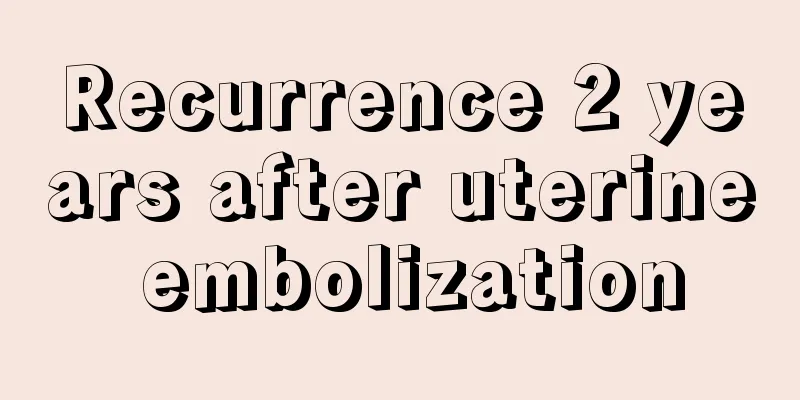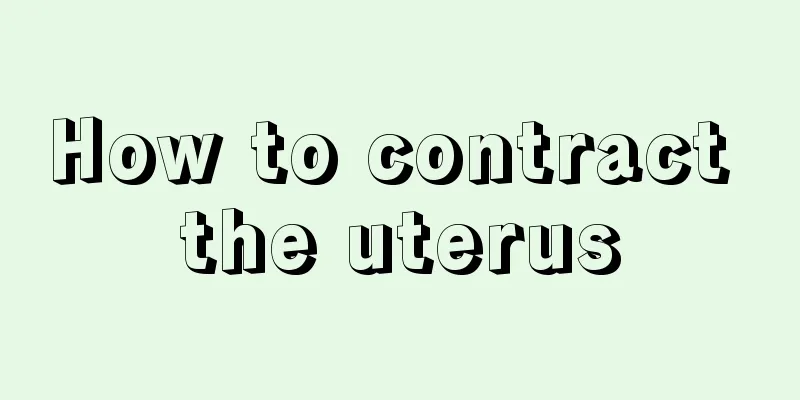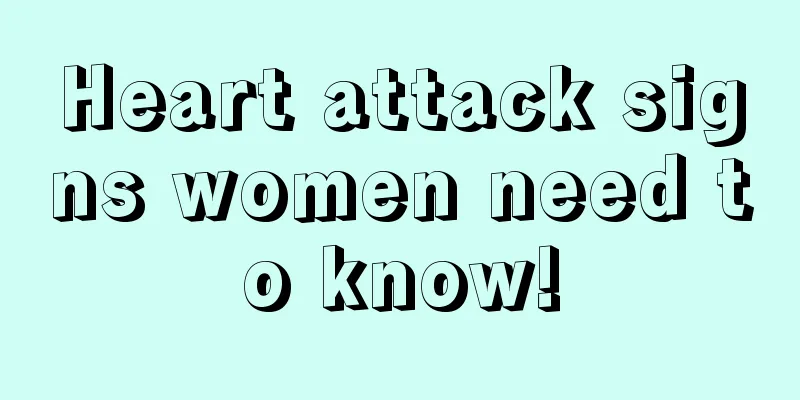Recurrence 2 years after uterine embolization

|
Some patients are diagnosed with uterine fibroids through B-ultrasound, or they had uterine fibroids before and the uterine fibroids recurred after treatment. In these cases, they can choose uterine intervention and occlusion therapy for treatment. Although this method of treating uterine fibroids has made great technical progress, this type of treatment will still cause some pain to patients. For example, some patients will ask if it is normal to have unbearable pain after uterine intervention and occlusion. Below is some brief introduction to this topic. 1. The duration of pain. After using this method to treat uterine fibroids, there will be a feeling of pain and soreness, which will probably last about 20 days and will basically disappear naturally after 20 days. According to this treatment method, the patient can carry out normal activities ten days later, and the average number of days without pain and soreness is about 13 days. If you still feel this kind of soreness and pain 20 days after treatment, you need to go to the hospital for examination in time. 2. Certain force majeure events. Some patients will experience urinary retention after receiving this treatment method, followed by lower abdominal pain. This pain can be relieved spontaneously until it eventually disappears, but a very small number of patients must have a urinary catheter inserted to alleviate the urinary retention. 3. Other side effects after surgery. After treatment, many patients experienced lower abdominal pain, fever, vomiting, nausea and vomiting. When this happens, painkillers or sedatives can be given to relieve the symptoms. Generally, hospitalization for 1 to 2 days is required after surgery, and three days of anti-infection treatment is required after surgery. What is the cause of the uterine blockage after 2 years of intervention? Interventional surgery itself also has a certain degree of recurrence. Currently, most reports show that there is a 30-40% recurrence rate 2 years after surgery. Whether uterine obstruction will occur after interventional surgery is related to the type of disease. If it is a uterine fibroid, it can be blocked by radical surgery at one time; if it is a tumor, regular follow-up is required after embolization treatment. If the tumor grows again, embolization treatment can be repeated. |
<<: Labor pains begin and the baby moves frequently
>>: What to do if multiple cervical cysts occur
Recommend
What are the symptoms of late uterine
The early stage of the disease is not scary, but ...
Do I have to go for a postpartum checkup 42 days after delivery?
Postpartum check-ups must be done within one mont...
Female armpit pain without lump
In clinical practice, many female patients experi...
Preventing liver cancer starts with little things
Whether it is healthy people or patients with liv...
How many days does the stringy vaginal discharge last during ovulation?
Vaginal discharge is a reflection of whether ther...
Why is my period suddenly less?
Menstruation can be said to be a woman’s best fri...
Signs of early pregnancy in girls
As today's lifestyle becomes more and more di...
Chinese medicine can completely cure gynecological diseases
Women are born to pursue beauty. If they suffer f...
What to do if you have back pain due to postpartum disease? Treatment of postpartum disease
If women do not take good care of themselves duri...
What disease is it when a woman has a little blood in the toilet after masturbation?
Masturbation can be said to be a way for one to e...
Electrocautery for cervical erosion?
Cervical erosion is a very common cervical diseas...
Can pregnant women eat roasted leeks?
We all know that there are many dietary taboos th...
Is liposuction safe?
Liposuction surgery is very popular now, especial...
World Vitiligo Day丨Can vitiligo patients take vitamin C? The disappearance of white spots means the disease is cured? Stop spreading these rumors!
Is it good for patients with vitiligo to get more...
How is the sexual function of a 40-year-old woman?
As the saying goes, women are like wolves at thir...









